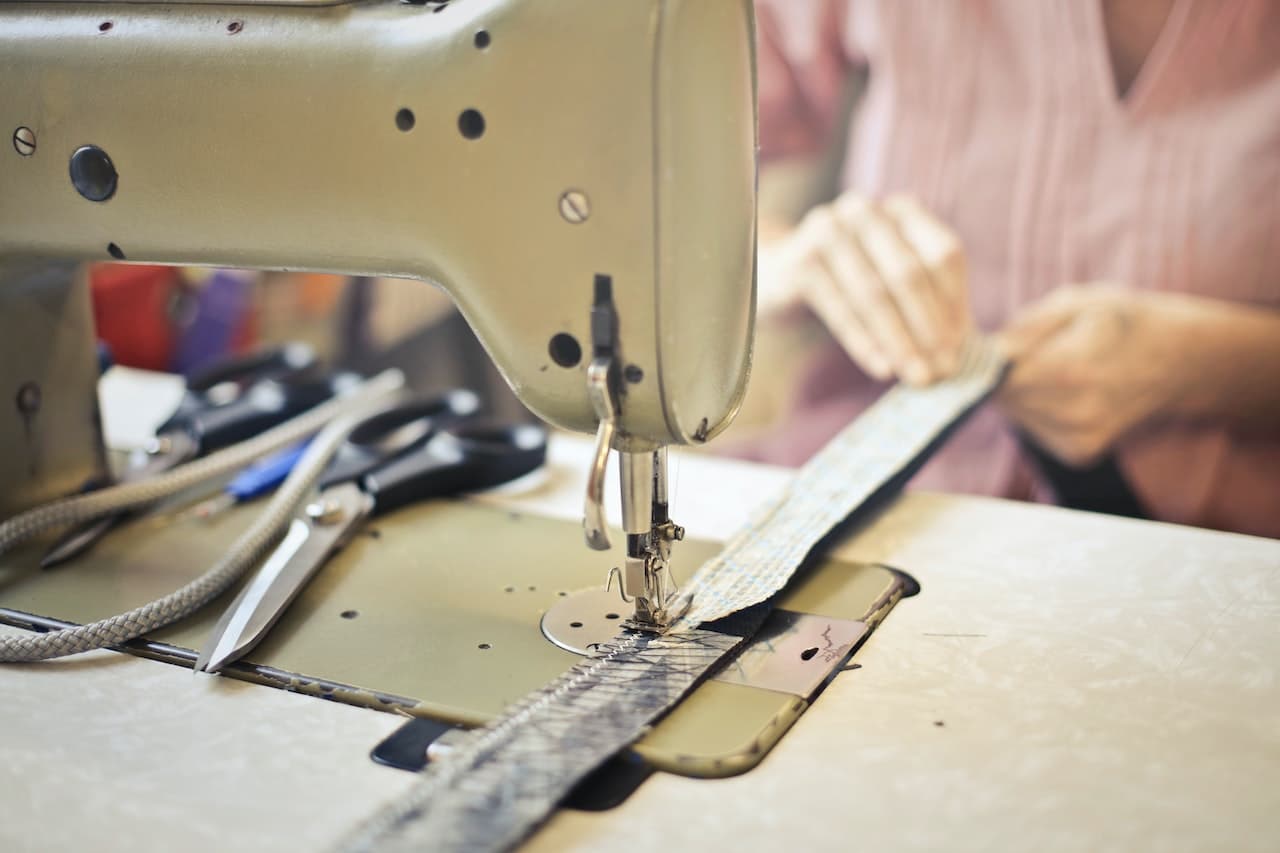Our PESTLE Analysis of the clothing industry identifies the external factors that affect brands such as Gucci, Prada and Versace.
Do you follow the latest fashion styles introduced by top clothing brands such as Gucci, Prada, and Versace? If yes, then you must read this article since it provides insight into the clothing industry and discusses the external factors that impact it.
The clothing industry is one of the biggest industries across the globe since every human on this planet requires clothes to wear. Regardless of ethnicity, class, and any other division, people living in every part of the world are involved in the clothing industry in one way or another.
Looking at the significance of the clothing industry, today we have decided to conduct a PESTLE Analysis of The Clothing Industry. However, before conducting the PESTLE analysis, let's discuss the history of the clothing industry.
The clothing industry, also known as the fashion industry, has a fascinating history dating back to the early civilizations of ancient Egypt, Greece, and Rome.
Clothing has always been an essential aspect of human culture, providing protection, comfort, and a means of self-expression. In the early days, clothing was primarily made by hand, with skilled artisans using natural fibers such as wool, cotton, and silk to create functional and beautiful garments.
During the industrial revolution, the clothing industry began to change dramatically. New technologies paved the way for the mass production of clothing, making it more affordable and accessible to the general public.
In the early 20th century, fashion designers emerged as celebrities, and fashion shows became a way to showcase new designs. In addition, the 1920s and 1930s were marked by the emergence of haute couture. This term refers to high-end, custom-made clothing often worn by celebrities and socialites.
In the 1950s, the rise of television and the movie industry helped to popularize fashion, with stars like Marilyn Monroe and Audrey Hepburn becoming style icons.
The 1960s and 1970s were marked by a significant cultural shift towards individual expression, leading to the popularity of ready-to-wear fashion and the emergence of fashion icons such as Twiggy and Jacqueline Kennedy Onassis.
The 1980s and 1990s saw an increase in designer brands such as Tommy Hilfiger, Ralph Lauren, and Calvin Klein and the emergence of streetwear as a major fashion trend.
Today, the clothing industry is a multi-billion dollar global enterprise driven by fast fashion and the constant need for new styles and trends.
Fast fashion refers to the production of inexpensive, trendy clothing designed to be worn for a short period and then discarded. Major players in the industry include H&M, Zara, and Nike, among others.
Currently, the clothing industry is one of the biggest industries in terms of revenue. In 2020, the global clothing market was worth $1.590 trillion. The industry is expected to grow at a rate of 4.3% and reach $2.230 trillion by 2028.
Now that we have discussed the history and current position of the clothing industry in detail let's discuss what PESTLE analysis is.
PEST analysis is a tool that businesses use to highlight Political, Environmental, Social and Technological factors along with Legal, and Economic ones in the PESTLE variant that impact any organization or industry.
Now that you know what PESTLE analysis is, let's proceed further and conduct a clothing industry PESTLE analysis.

Political Factors That Impact The Clothing Industry
The clothing industry is a highly competitive and ever-changing market constantly affected by various political factors.
Trade policies play a significant role in the clothing industry. Globalization has enabled clothing manufacturers to source raw materials worldwide and sell finished products in various international markets.
However, trade policies such as tariffs, quotas, and embargoes can restrict the flow of goods and increase the cost of production.
Government regulations are also a critical political factor impacting the clothing industry. For example, product safety and labeling laws, environmental regulations, and anti-dumping laws can significantly impact clothing manufacturers and retailers.
For example, if a government imposes strict regulations on the use of chemicals in the production of clothing, this could increase the cost of production for manufacturers that rely heavily on chemical processes.
Moreover, taxation is another political factor that can impact the clothing industry. Taxation policies can affect both consumers and businesses operating in the industry. For example, if a government imposes a tax on imported clothing products, this could increase the cost of imported clothing for consumers.

Economic Factors That Impact The Clothing Industry
The clothing industry is one of the world's largest industries, generating significant revenues and providing employment to millions. The industry is susceptible to various economic factors.
Economic growth is one of the most significant economic factors that impact the clothing industry. Economic growth is an essential driver of consumer spending, influencing demand for clothing products. During periods of economic growth, consumers typically have more income to spend on non-essential items like clothing.
As a result, the demand for clothing products tends to increase, and clothing manufacturers and retailers often experience higher sales volumes and revenues.
Inflation is another economic factor that impacts the clothing industry. Inflation is the term used to measure the rate at which the level of prices for goods and services is increasing.
When inflation is high, the cost of production for clothing manufacturers tends to increase as they face higher prices for raw materials and other inputs. This results in higher prices for clothing products, reducing demand and sales volumes.
Other than inflation, exchange rates are another significant economic factor that impacts the clothing industry. Exchange rates refer to the value of one currency relative to another. As a result, clothing manufacturers that source raw materials from overseas or sell products in international markets are susceptible to exchange rate fluctuations.
When the value of the domestic currency decreases relative to other currencies, clothing manufacturers that sell products in those markets will experience higher revenues as their products become more affordable for international consumers.

Social Factors That Impact The Clothing Industry
The clothing industry is influenced by economic and social factors such as changing consumer tastes, lifestyle trends, cultural values, and demographic shifts.
One of the most significant social factors that impact the clothing industry is changing consumer tastes. Consumers' preferences for clothing styles, colors, and designs constantly evolve, influenced by fashion trends and cultural influences.
Clothing manufacturers and retailers that fail to keep up with changing consumer tastes risk losing market share and profitability.
Besides that, cultural values are another important social factor that impacts the clothing industry. Clothing styles and designs in one culture may not be appropriate in another.
As a result, clothing manufacturers and retailers must consider cultural values when designing and marketing their products.
Demographic shifts are also significant social factors that impact the clothing industry. For example, changes in population demographics, such as aging populations or shifts in income levels, can influence the types of clothing products that consumers demand.
For example, an aging population may increase the demand for comfortable and functional clothing styles. In contrast, income-level shifts may lead to a shift in demand for luxury clothing brands.

Technological Factors That Impact The Clothing Industry
The clothing industry has seen significant technological advancements in recent years, which have impacted the production, distribution, and marketing of clothing products.
Technological factors such as automation, e-commerce, and 3D printing have revolutionised clothing manufacturers and retailers' operations.
Automation is one of the most significant technological factors that impact the clothing industry. Automation technology has increased efficiency and productivity in clothing manufacturing, as machines can perform tasks such as cutting, sewing, and stitching much faster than humans.
This has reduced the cost of production and increased the speed at which clothing products can be manufactured.
3D printing is another technological factor beginning to impact the clothing industry. 3D printing technology allows clothing manufacturers to produce products with incredible speed, efficiency, and greater design flexibility.
This technology enables manufacturers to create unique, custom-made clothing products tailored to individual customer preferences.
Moreover, Artificial intelligence (AI) is also impacting the clothing industry. AI can be used to analyze consumer data and identify trends in clothing preferences, helping clothing manufacturers and retailers produce clothing products more likely to be in demand.
AI is also used to optimize supply chain management, helping clothing manufacturers to improve their efficiency and reduce costs.

Legal Factors That Impact The Clothing Industry
The clothing industry is subject to various legal factors that impact how clothing products are produced, distributed, and sold.
Intellectual property law is considered one of the most significant legal factors that impact the clothing industry. The Intellectual property law protects clothing designs, logos, and brand names from being copied or imitated by other businesses.
Clothing manufacturers and retailers must ensure that their products do not infringe upon the intellectual property rights of others. Failure to do so can result in legal action, which can be costly and damage a business's reputation.
Moreover, labor laws are another critical legal factor that impacts the clothing industry. Clothing manufacturers and retailers must ensure that they comply with labor laws regulating employees' wages, hours, and working conditions.
In addition, clothing businesses must ensure that they are not engaging in exploitative labor practices such as child labor or forced labor. Failure to comply with labor laws can result in legal action and damage a business's reputation.
Product safety regulations are also a significant legal factor that impacts the clothing industry. Clothing products must comply with safety regulations designed to protect consumers from harm.
Clothing manufacturers and retailers must ensure that their products do not contain harmful chemicals or materials and are properly labeled with care instructions and warnings.

Environmental Factors That Impact The Clothing Industry
Environmental factors such as climate change, water scarcity, and waste management have become increasingly important. As a result, they are now major considerations for businesses operating in the clothing industry.
Climate change is one of the key environmental factors that impact the clothing industry. Clothing production requires a significant amount of energy primarily generated from fossil fuels.
Producing synthetic fibers such as nylon and polyester also produces greenhouse gas emissions. These emissions contribute to climate change, which has far-reaching impacts on the environment and society.
Clothing businesses must reduce their carbon footprint by adopting sustainable practices, for example, using renewable energy and reducing waste. Waste management is another significant environmental factor that impacts the clothing industry.
Disposing of clothing products, often made from synthetic materials that do not biodegrade, can significantly impact the environment.
Clothing businesses must reduce their waste by implementing sustainable practices such as using recycled materials and designing products that can be easily recycled.
Water scarcity is another significant environmental factor that impacts the clothing industry. The production of cotton, which is the most widely used natural fiber in clothing production, requires a large amount of water.
In addition, the dyeing and finishing of textiles also require significant amounts of water. This can result in water scarcity in areas with limited water resources.

PESTLE Analysis of The Clothing Industry: Final Word
The clothing industry is one of the most significant industries operating globally. This article discussed the history of the clothing industry and shed light on how it evolved over the years.
Moreover, it also discussed the current status of the clothing industry.
After providing insight into the clothing industry, we conducted a PESTLE analysis to see what external factors impact the clothing industry.
The PESTLE analysis helped us in analyzing how various political, economic, social, environmental, technological, and legal factors impact the clothing industry.
After reading this article, we assume you know what external factors impact the clothing industry. Moreover, reading this article would also have made you aware of the PESTLE analysis framework.
If you want to read more PESTLE analysis articles, do look at some of the PESTLE analysis examples.


